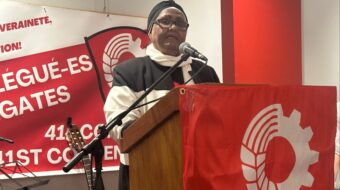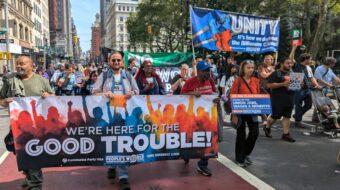Israel’s cabinet voted April 30 to lay temporary fencing around areas of Jerusalem where the West Bank apartheid wall has not yet been built.
Ir Amim, an Israeli group that campaigns for Palestinian rights, said the fencing will disrupt the lives of thousands of Palestinians who enter the city every day for jobs, services or schooling.
Israeli officials would not say if the temporary fencing would include gateways for Palestinians with permission to pass through. If it does not, it will hamper the lives of Palestinians in the area even more than the permanent barrier, which does include passages, Ir Amim head Danny Seidemann pointed out.
This means that Jerusalem is becoming sealed off, Seidemann noted, adding that the physical barrier will be in place long before any mechanism exists to let Palestinians through.
Palestinian geographer Khalil Tafakji said, “They are keeping Palestinians outside the city in an effort to create facts on the ground and pre-empt a final agreement between the sides.”
The Israeli cabinet also modified the planned route of the apartheid wall in the area of the Jewish settlement of Ariel to put 30,000 Palestinians on the “Palestinian” side of the barrier.
The settlement bloc is the deepest inside the West Bank and the cabinet’s action indicates that Israel intends to retain West Bank land where the bloc is situated.
Israel claims all of Jerusalem as its capital, while Palestinians view the mostly Arab eastern sector as the capital of their future state.
The fencing in Jerusalem is to fill in gaps in the permanent barrier that have not been built, in part because of dozens of legal challenges to about 10 percent of its route that have been brought by Palestinians and human rights campaigners.
— Morning Star (www.morningstaronline.co.uk)









